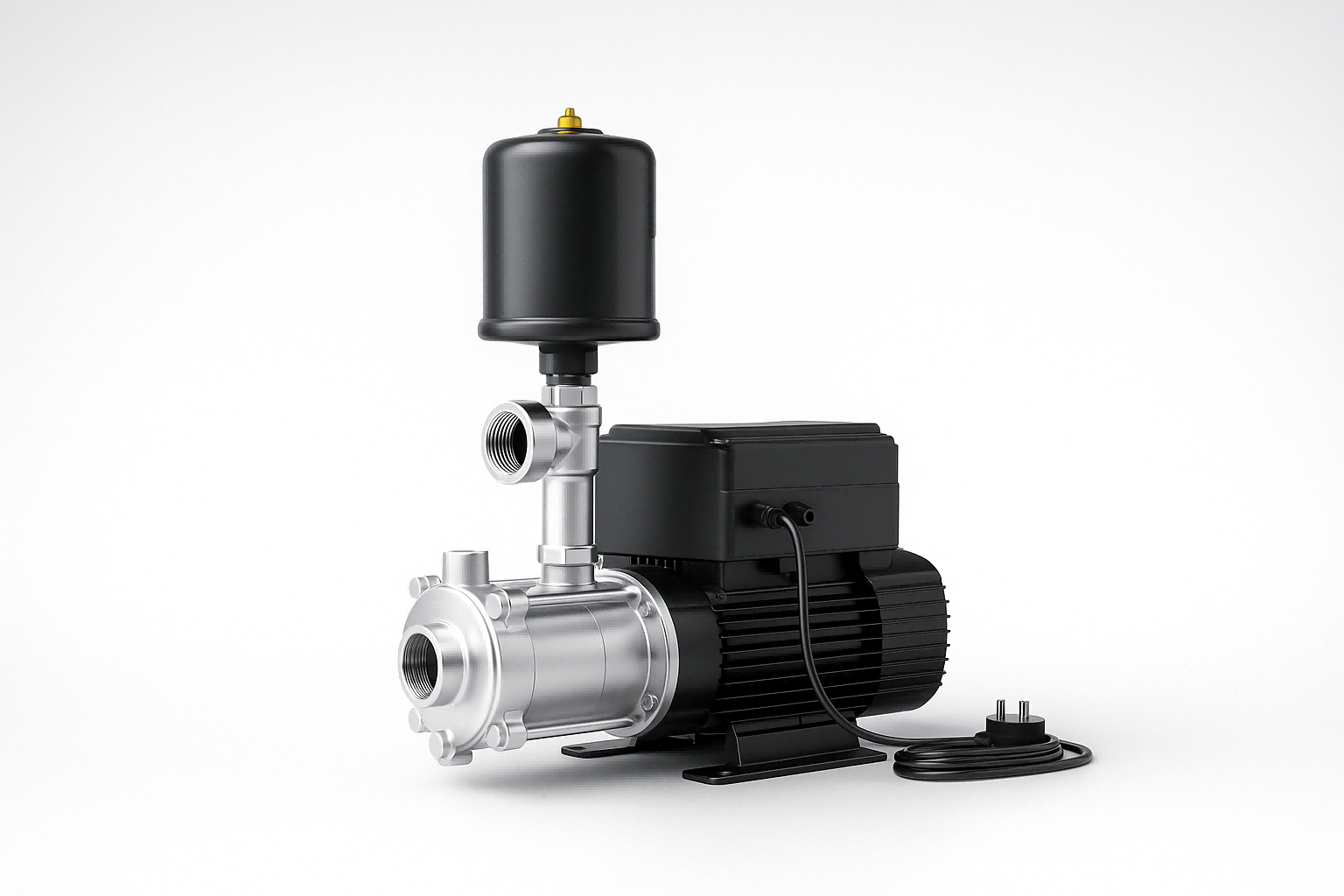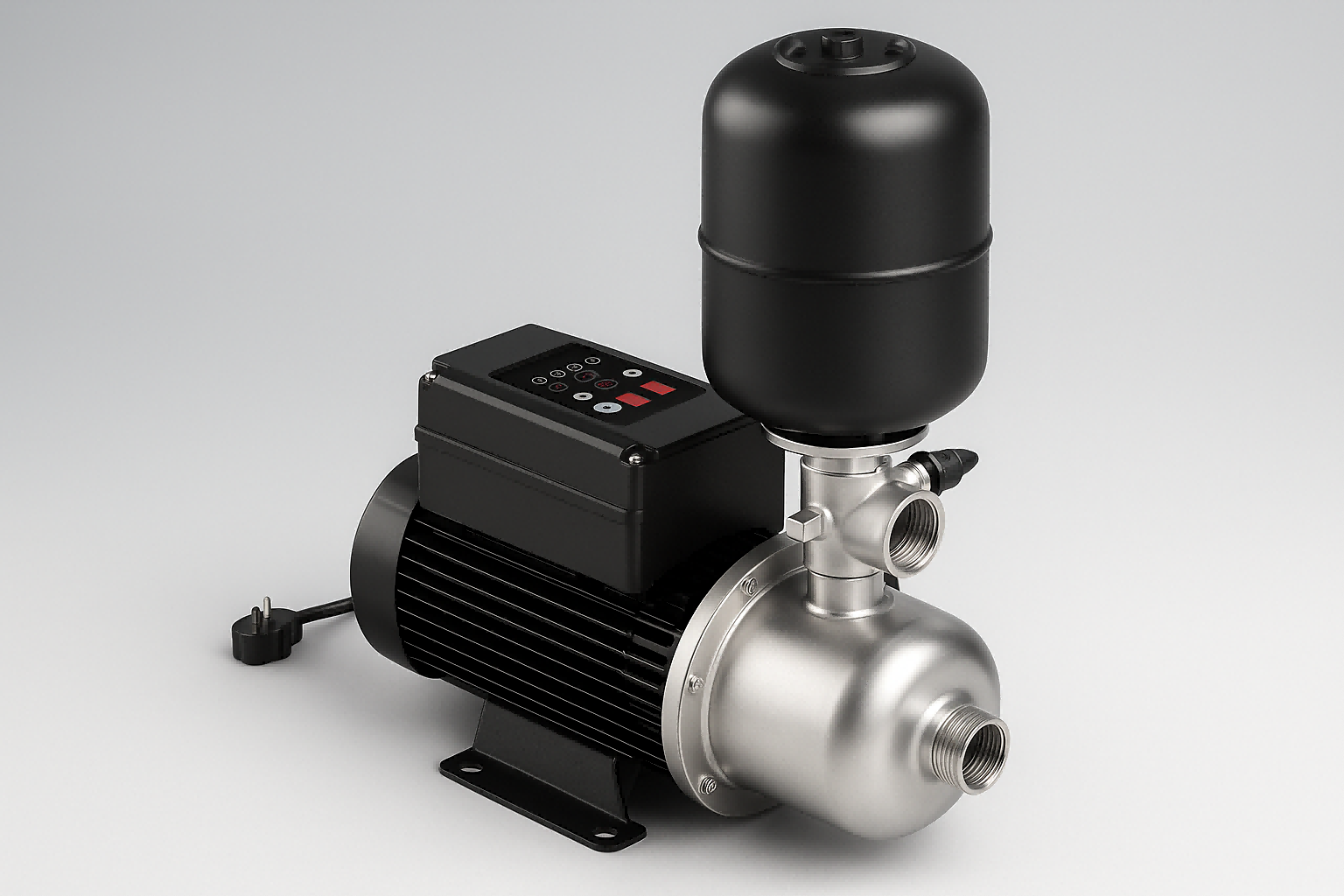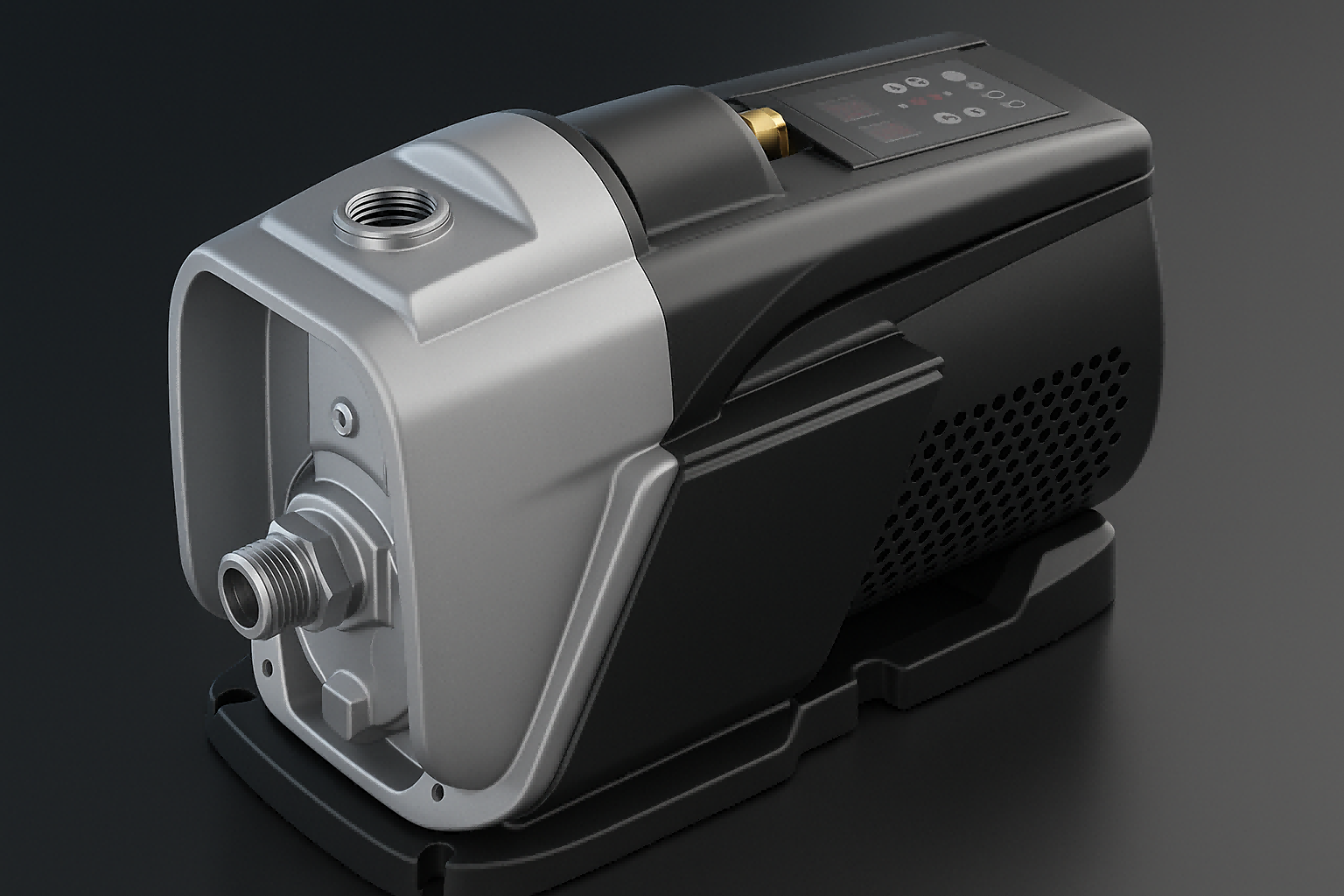Are you worried about your water pump's excessive runtime? High energy bills and premature equipment failure are serious concerns. Understanding the factors that control its operation is key.
A standard residential water pump typically runs for a total of 1 to 2 hours per day. However, this varies greatly. The exact duration depends on water demand, system type, and overall efficiency. Modern variable speed drive (VSD) pumps may run longer but at lower, energy-saving speeds.

That figure is just a general benchmark.
The actual operating time for any given pump is not fixed.
It is influenced by a combination of technical factors and user habits.
To truly understand your pump's schedule, we need to explore what drives its operation.
Let's break down the key elements that determine how long your pump works each day and how you can ensure it runs efficiently.
What Determines Your Pump's Daily Workload?
Are you confused about why your pump's runtime fluctuates daily?
Inconsistent run times can be puzzling and may even signal underlying system issues.
Understanding the primary factors gives you the power to manage performance and control operational costs effectively.
A pump's total daily run time is mainly dictated by your property's water demand, the size of the pressure tank, and the pump's flow rate. External factors like plumbing leaks or seasonal weather changes also have a significant impact on its daily operation.
The daily runtime of a water pump is not a random number.
It is a direct response to a set of specific conditions within your water system.
Each factor plays a critical role in how frequently the pump needs to turn on and for how long it stays on.
Let's go deeper into these individual components to see how they work together to create the pump's daily schedule.
Household and Building Water Consumption
This is the most significant driver.
Every time a faucet is opened, a toilet is flushed, or an irrigation system turns on, the pump has to work to replace that water and restore pressure.
Higher water usage directly translates to longer total run times.
A large family or a commercial building will naturally cause the pump to run more than a small household.
To put this in perspective, here is a look at typical water usage for common activities.
| Appliance / Activity | Average Water Usage |
|---|---|
| Shower (10 minutes) | 20-25 Gallons |
| Toilet Flush (older) | 3-5 Gallons |
| Toilet Flush (efficient) | 1.6 Gallons |
| Dishwasher Cycle | 4-6 Gallons |
| Washing Machine Load | 15-30 Gallons |
| Lawn Sprinkler (1 hour) | 600+ Gallons |
The Role of the Pressure Tank
The pressure tank acts as a small reservoir.
It stores pressurized water so the pump doesn't have to turn on for every small demand, like washing your hands.
A larger tank can supply more water before the pressure drops to the point where the pump needs to activate.
This means the pump will cycle on less frequently but will run for a longer period each time to refill the larger tank.
This is generally better for the motor's health than frequent, short starts.
A small or waterlogged tank will cause the pump to "short cycle," which is a leading cause of premature motor failure.
Pump Sizing and Flow Rate (GPM)
The pump's capacity, measured in gallons per minute (GPM), determines how quickly it can deliver water and refill the pressure tank.
A pump with a higher GPM rating will satisfy demand and restore pressure faster than a smaller pump.
Therefore, a correctly sized, high-capacity pump will have shorter individual run times.
However, an oversized pump can also be a problem.
It can fill the pressure tank too quickly, leading to more frequent on/off cycles, which increases wear and energy use.
Proper system design requires matching the pump's GPM to the building's peak demand and pressure tank size.
Does Pump Type Change the Daily Runtime?
Is your old pump constantly cycling on and off?
That outdated technology could be wasting significant energy and money.
Modern pumps provide a smarter, more efficient approach to managing your water supply and its associated costs.
Yes, the type of pump dramatically changes the runtime. A traditional fixed-speed pump runs at 100% power for short periods. In contrast, a Variable Speed Drive (VSD) pump runs for longer durations but at precisely controlled lower speeds to perfectly match water demand, saving massive amounts of energy.
The fundamental difference between pump technologies creates two very different operating profiles.
One is a simple on-or-off system, while the other is an intelligent, responsive system.
This distinction is crucial for anyone looking to optimize their water system for efficiency, longevity, and performance.
Understanding how each type works reveals why modern solutions offer superior value for property owners and distributors alike.
The On/Off Cycle of Conventional Pumps
Standard, single-speed pumps operate on a simple principle.
They use a pressure switch with two set points: a cut-in pressure and a cut-out pressure.
When water is used and the pressure in the tank drops to the cut-in level (e.g., 40 PSI), the pump turns on at full speed.
It runs at maximum power until the pressure reaches the cut-out level (e.g., 60 PSI), and then it shuts off completely.
This process results in noticeable pressure fluctuations at the tap and high energy consumption during startup and operation.
The total daily runtime is the sum of all these short, high-power bursts.
The Smart Operation of VSD Booster Pumps
Variable Speed Drive (VSD) or Variable Frequency Drive (VFD) pumps are much more sophisticated.
These are the types of advanced systems we specialize in at RAFSUN.
A VSD pump contains an intelligent controller that monitors water pressure in real-time.
Instead of shutting off, the pump's motor speed is continuously adjusted to precisely match the current water demand.
If you open one faucet, the pump might run at only 20% of its maximum speed.
If you open multiple taps, it will speed up accordingly to maintain a perfectly constant water pressure.
This means the pump may run for longer continuous periods, but at a much lower average speed.
Energy Savings and Equipment Lifespan
The primary benefit of a VSD pump's operating method is energy efficiency.
Pump energy consumption is not linear; reducing a pump's speed by half can reduce its energy use by up to 80%.
By avoiding constant full-power starts and stops, VSD pumps can cut electricity costs by 50% or more compared to conventional systems.
This "soft start" operation also dramatically reduces mechanical stress on the pump motor, pipes, and valves, significantly extending the lifespan of the entire water system.
Here is a clear comparison.
| Feature | Conventional On/Off Pump | RAFSUN VSD Booster Pump |
|---|---|---|
| Operation | Runs at 100% speed or is off | Speed adjusts to match demand (e.g., 10-100%) |
| Water Pressure | Fluctuates between two set points | Perfectly constant and stable |
| Energy Use | High, with large inrush current at startup | Up to 50% lower, no power spikes |
| Runtime Profile | Short, frequent bursts of high-power operation | Longer periods of low-power, quiet operation |
| Mechanical Wear | High due to constant cycling and stress | Low due to soft starts and smooth operation |
| Acoustic Noise | Loud during startup and operation | Significantly quieter across all speeds |
How Long Should a Pump Run Per Cycle?
Does your pump turn on and off every few seconds?
This rapid, repetitive clicking is a classic sign of short-cycling.
This damaging behavior can quickly destroy the pump's motor and pressure switch, leading to expensive and unexpected repairs.
An ideal run time per cycle for a standard residential pump is a minimum of one to two minutes. This allows the motor to dissipate heat properly between starts. Any cycle shorter than 30 seconds is considered short-cycling and indicates a problem with the system.
The duration of each individual run cycle is just as important as the total runtime per day.
Short-cycling is one of the most destructive things that can happen to a water pump.
The heat generated during motor startup is significant.
If the pump doesn't run long enough to cool down, this heat builds up with each short cycle.
This leads to overheating, which can degrade the motor windings and cause premature failure.
Let's explore what constitutes a healthy cycle and what causes a damaging one.
The Ideal Run Cycle Duration
For a conventional pump system, a healthy run cycle should be long enough to achieve two things.
First, it must allow the motor to cool effectively.
A one-to-two-minute runtime is typically sufficient for the motor's internal fan and the surrounding water to draw heat away.
Second, it should efficiently refill the pressure tank.
This minimizes the total number of starts the pump has to perform in a day.
Most pump motors are rated for a maximum number of starts per hour; short-cycling can easily exceed this limit.
What Causes Short-Cycling?
The most common cause of short-cycling is a problem with the pressure tank.
Specifically, it is often due to a loss of the air charge inside the tank.
The tank contains a bladder or diaphragm that separates a pocket of compressed air from the water.
If this air leaks out or the bladder ruptures, the tank becomes "waterlogged."
Without the compressed air cushion, the tank cannot store pressurized water.
As soon as a faucet is opened, pressure drops instantly, and the pump turns on.
When the faucet is closed, pressure spikes instantly, and the pump shuts off.
This results in a cycle that can last just a few seconds.
Diagnosing and Fixing the Issue
If you suspect short-cycling, you can perform a simple check.
Observe the pump's pressure gauge while a small amount of water is running, like a single faucet.
If the needle rapidly drops and the pump kicks on, and then rapidly rises and the pump shuts off, you likely have an issue.
Other potential causes include:
- A Clogged Water Filter: A blocked filter restricts flow, causing pressure to build up quickly between the pump and filter, shutting the pump off prematurely.
- A Faulty Pressure Switch: The switch itself could be defective, causing it to chatter or cycle the pump erratically.
- Undersized Pressure Tank: The tank may simply be too small for the pump's capacity, causing it to fill up too quickly.
Fixing the problem usually involves recharging the pressure tank with air, replacing a faulty tank or switch, or cleaning filters.
Addressing short-cycling immediately is critical to protecting your investment in the pump.
Is It Okay for a Pump to Run Continuously?
Do you hear your pump running constantly, even when no water is being used?
This is a major red flag.
A pump that never shuts off is not only wasting a massive amount of electricity but is also at high risk of burning itself out from overheating.
No, it is not okay for a standard pump to run continuously. This usually indicates a significant plumbing leak, a faulty pressure switch that is stuck on, or a pump that is worn out and unable to build enough pressure to shut off. This situation requires immediate attention.
A pump that runs non-stop is a system in crisis.
It is actively wasting resources and heading toward a catastrophic failure.
The only exception to this rule is certain types of pumps designed for continuous duty, such as circulation pumps, or a VSD pump running at a very low speed to meet a small, constant demand like a reverse osmosis system.
For a standard residential well pump or booster pump, continuous operation is a clear sign that something is wrong.
Let's break down the common culprits behind this serious issue.
The Problem of Plumbing Leaks
This is the most frequent cause of a continuously running pump.
A leak somewhere in the plumbing system creates a constant demand for water.
The pump runs to try and satisfy this "demand" and reach its shut-off pressure, but the leaking water prevents the pressure from ever building up enough.
The leak could be large and obvious, like a broken sprinkler head, or small and hidden.
Underground pipe leaks or a silent, constantly running toilet are common hidden leaks that can cause a pump to run for hours on end.
To check for leaks, you can turn off all water-using appliances in the building and watch the pressure gauge or your water meter.
If the pressure slowly drops or the meter continues to spin, you have a leak.
Mechanical and Electrical Failures
If you have confirmed there are no leaks, the problem may lie with the pump or its controls.
Here are a few potential failure points.
- Faulty Pressure Switch: The switch's contacts can become welded or stuck in the "on" position, meaning it can no longer send a signal to turn the pump motor off.
- Worn-Out Pump Internals: A pump's impellers can wear down over time. A worn pump may lose its ability to generate enough pressure to reach the system's cut-off point. It will run and run but never get the job done.
- A Drop in the Water Table: For a well pump, if the water level in the well has dropped below the pump's intake, it will run continuously while pumping a mix of air and water, never achieving full pressure.
VSD Pumps and Continuous Operation
It is important to reiterate that VSD booster pumps operate differently.
It can be normal for a VSD pump to run continuously for long periods, but at a very low and quiet speed.
This happens when there is a small, steady demand for water.
The smart controller runs the motor just fast enough to meet that demand perfectly.
However, if a VSD pump is running continuously at a high speed when no water is being used, it also indicates a significant leak or system problem that needs to be addressed.
Conclusion
A pump's runtime is a key health indicator.
Understanding these factors helps you manage your water system for optimal efficiency, longevity, and cost-effectiveness.
FAQs
How long can a water pump run continuously before it is damaged?
Most standard pumps can run for a few hours continuously but are not designed for it.
Running non-stop for days will likely cause overheating and motor burnout.
Does a larger pressure tank save electricity?
A larger tank reduces the number of times a pump starts, which saves on motor wear.
It can provide minor energy savings by minimizing high-amperage startups.
Why does my water pump turn on when no water is running?
This is almost always caused by a slow leak somewhere in your plumbing system.
A faulty check valve at the pump can also allow pressure to bleed off.
What is the average lifespan of a water pump?
The average lifespan of a well pump is about 8 to 15 years.
Proper maintenance and avoiding issues like short-cycling can extend its life significantly.
Can I install a VSD on my existing pump?
Yes, in many cases, a standalone Variable Frequency Drive (VFD) controller can be retrofitted.
This can add smart, energy-saving capabilities to a compatible conventional pump motor.
How often should a water pump be serviced?
It is good practice to have your entire water system inspected by a professional every 1-2 years.
This can help catch issues like a waterlogged tank before they damage the pump.








